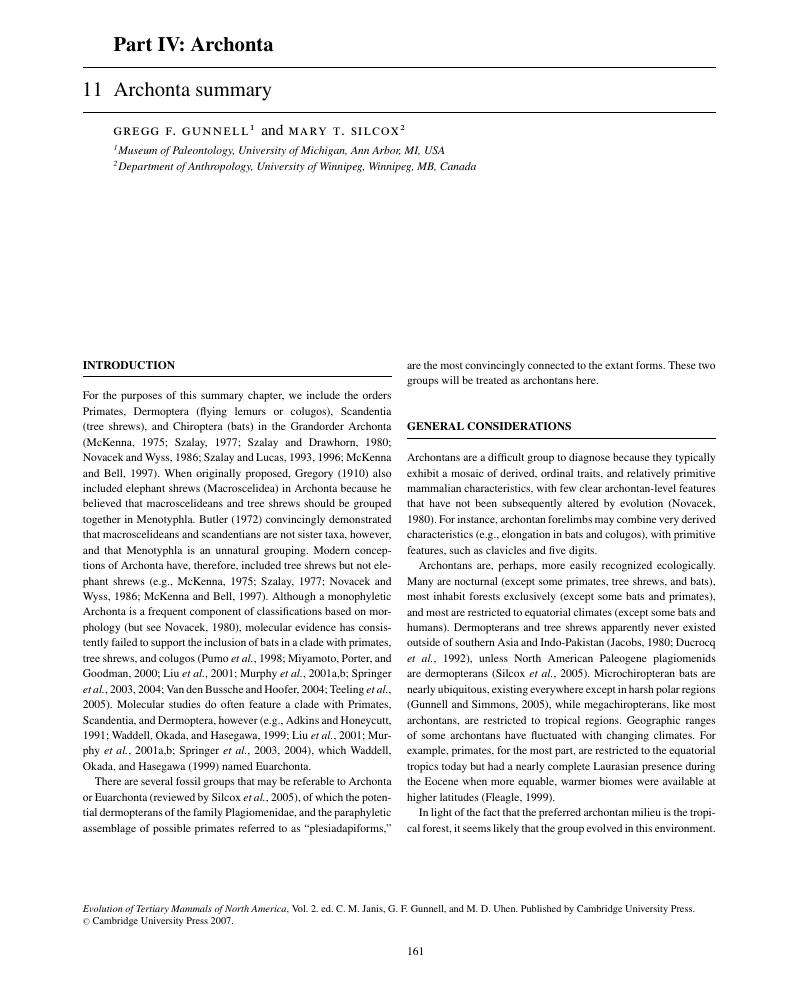Book contents
11 - Archonta summary
from Part IV - Archonta
Published online by Cambridge University Press: 07 September 2010
Summary

- Type
- Chapter
- Information
- Evolution of Tertiary Mammals of North America , pp. 161 - 173Publisher: Cambridge University PressPrint publication year: 2008
References
- 1
- Cited by



